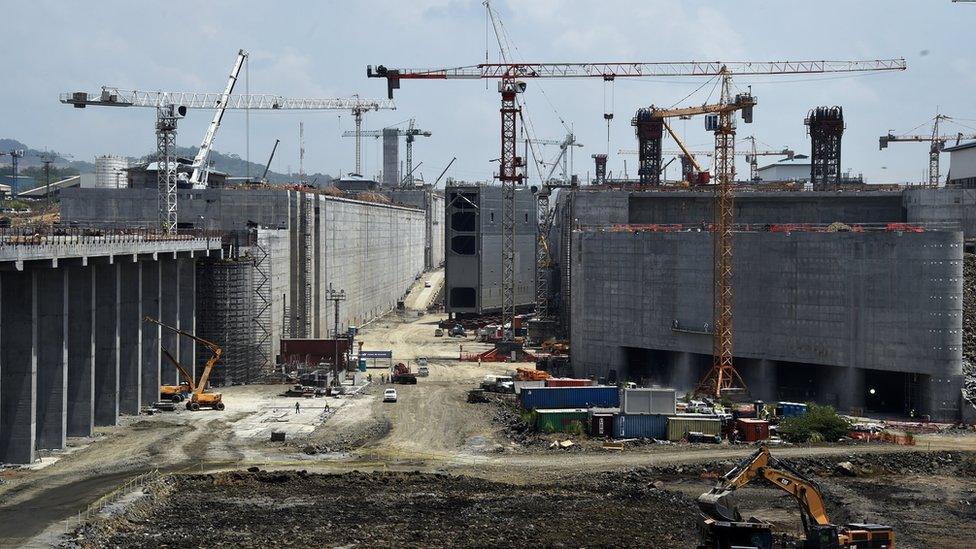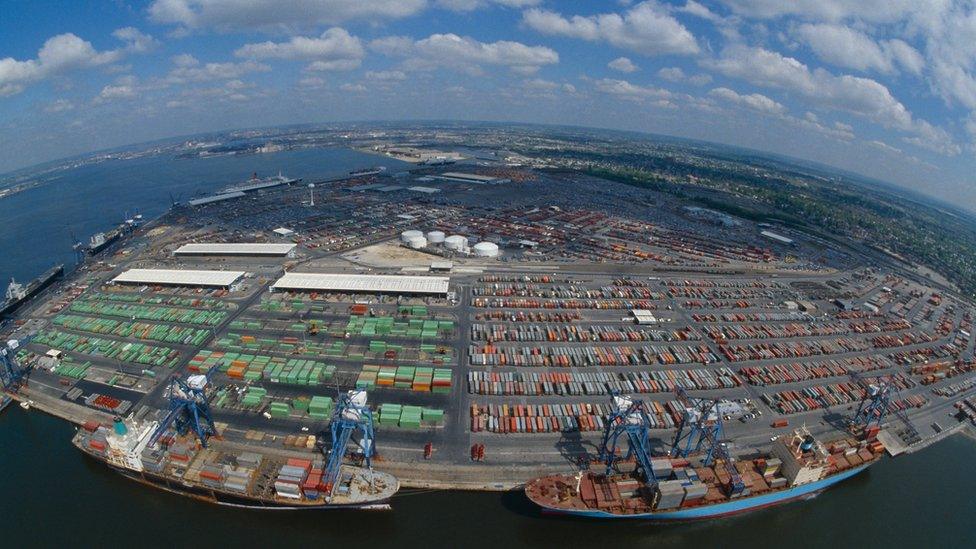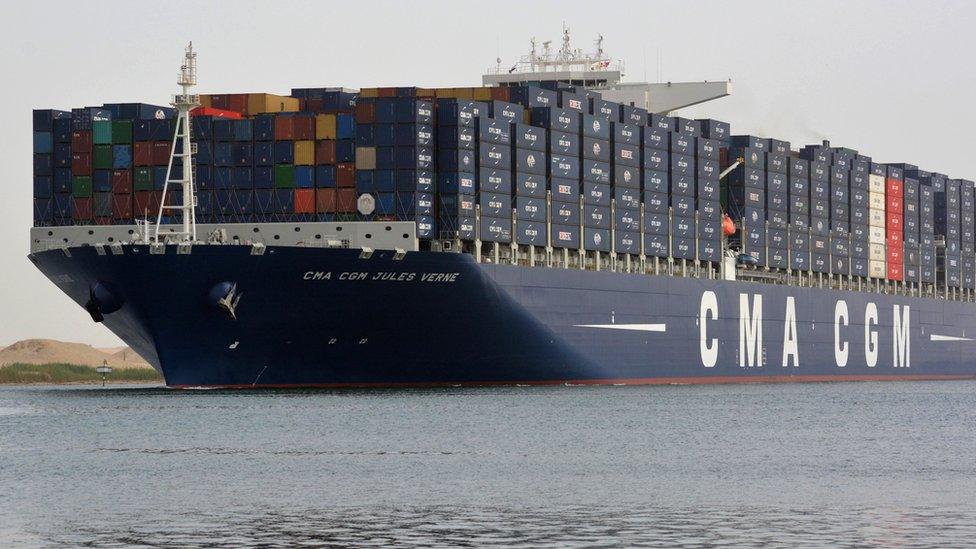Shipping slump: Why a vessel worth $60m was sold as scrap
- Published

The Hammonia Grenada was sold for scrap at the start of this year
In January 2010, the container ship Hammonia Grenada was delivered from a Chinese yard to its new owners, reportedly priced at about $60m (about £37m at that time).
Just seven years later - at the start of this year - it was sold for scrap. The price: an estimated $5.5m (£4.4m today).
It's not the only vessel to suffer this fate. Last year container ships were sold at rock-bottom prices for scrap in record numbers.
The simple reason is that there are too many ships for too little cargo.
The most dramatic casualty was South Korean group Hanjin, which collapsed last August weighed down by debts.

Hanjin collapsed last year after a massive spending spree
The container shipping industry, and Hanjin in particular, has been spectacularly wrong about the financial crisis - twice.
There was not one but two waves of container ship ordering in 2010, and then again in 2013-14. Interest rates were low and money was cheap. The result - a massive oversupply of vessels.
"The attitude in the industry was when you were not making profits the best thing to do was to cut costs, and the best way to cut costs is to increase scale, buying bigger and more fuel-efficient ships," explains Rahul Kapoor, director at shipping consultancy Drewry Financial Research Services.
"Before 2008 and 2009 the world had been growing consistently, and after 10 years of growth no-one in the shipping industry expected demand to shrink so fast.
"To start with they thought it was just a blip. But in reality it was structural, and they totally missed the structural problems."
The Panama effect
And there was another reason to buy - and to buy big: the Panama Canal.
Last year it got a serious upgrade. The old locks could take container ships up to only 5,000 TEU (Twenty-Foot Equivalent Unit, roughly one container). These are known as Panamaxes.
But the new locks, with gates weighing 700 tonnes or more, are designed to take so called Neo-Panamaxes. These are giants, equivalent to the width and length of three football pitches laid end to end, and can carry about 13,000 TEU.

The new lock gates on the Panama Canal weigh up to 700 tonnes and measure almost 30 metres high
So shippers looking to carry cargoes from Asia to the American east coast ports, can now take Neo-Panamaxes through the new canal - and sell off their smaller Panamaxes.
That's why Panamaxes like the Hammonia Grenada are going cheap - in fact, they're going nowhere. If you want to charter one, according to research group Clarksons, external, it will cost you less than half of what it did a year ago.
Andrew Scorer of S&P Platts says: "You have a steady trickle of ships going to the scrap yard under the blowtorch, but you have these bigger TEU ships with bigger capacity, and they're going to be ruling the waves for now."
Upgrading
Meanwhile, ports are modernising to take the bigger cargoes. Baltimore, Charleston, Miami, New York and Savannah are all updating facilities to accommodate the Neo-Panamaxes.

Baltimore container port - due an upgrade
For instance, the Port Authority of New York and New Jersey plans to spend $2.7bn on enlarging its terminals and shipping lanes, and a further $1.3bn to raise a bridge by 20 metres to get the monsters through.
But the fundamental problem of oversupply has not gone away.
According to Clarksons,, external the global fleet of all types of commercial shipping is 50% larger than it was before the financial crisis.
In contrast, the World Trade Organization, external says growth in global trade has been much smaller, creeping up from $14.3 trillion in 2007 to $16.7tn in 2015, an increase of just 15%.
Turning point
It's not necessarily all doom and gloom. In fact, Drewry's latest Shipping Outlook, external suggests the market could actually be at a turning point.
It believes the problem of too many ships for too little cargo is now set to improve, and forecasts global freight rates will increase by 12% this year after four years of decline.

Container ships may not be so relevant in an electronic world
But the reality is that the slowing in global trade may have more profound causes - not to do with shipping or economic growth, but to do with how and what we consume.
Last year, Mr Kapoor wrote a report for Drewry's using the example of his son's excitement at buying the Pokemon Go app and comparing his own habits 15 years earlier.
While his son was happy to buy something electronic, back in Mr Kapoor's youth he would have bought something physical that may well have been shipped in a container from Asia.
"In an increasingly knowledge based and services driven global economic expansion, the trade expansion is stagnating," he wrote.
"The global manufacturing engines, world trade, credit driven GDP growth model is being increasingly challenged and world trade seems to be stuck in a time warp, barely growing."